Archive
2021
KubaParis
In Youth is Pleasure
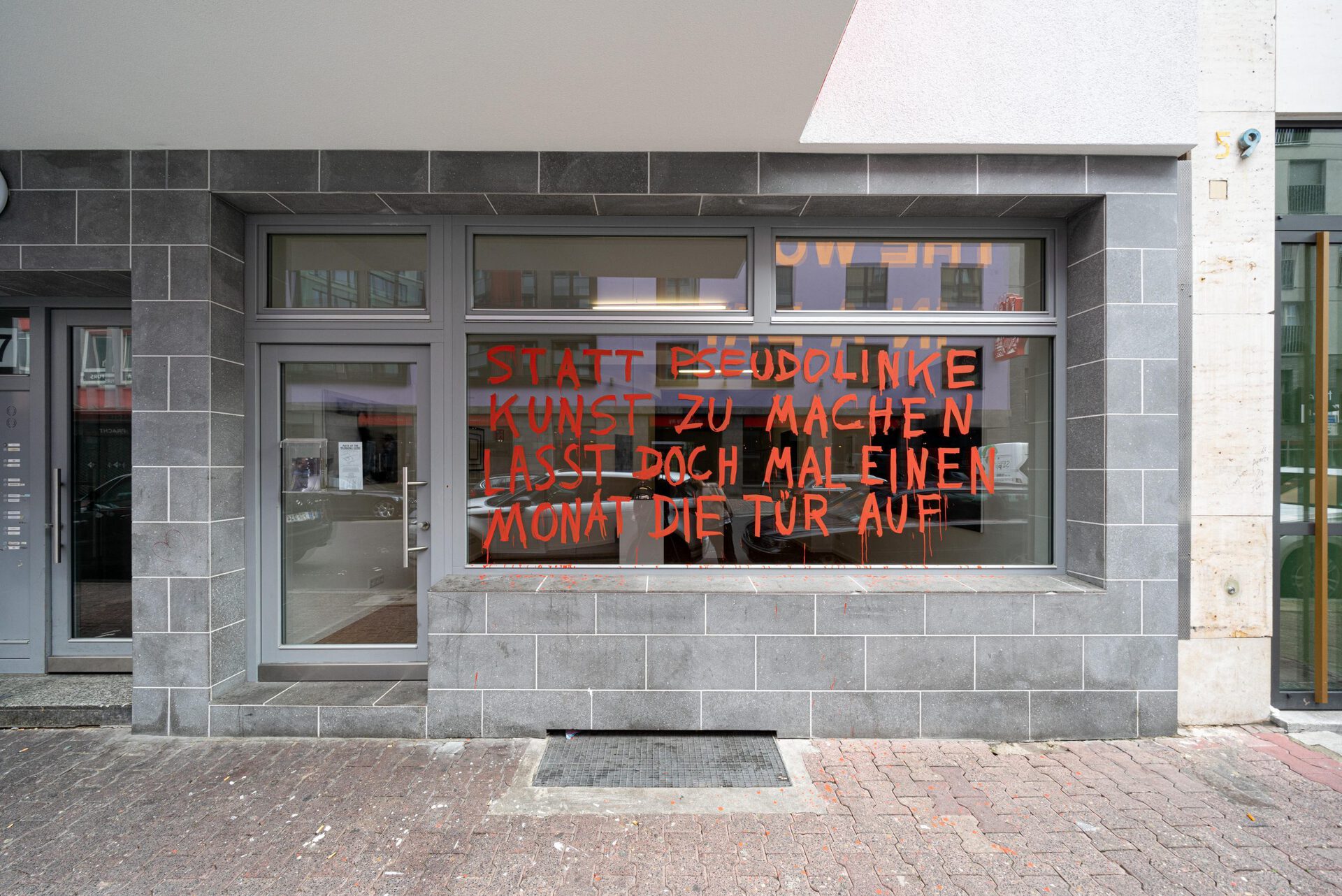
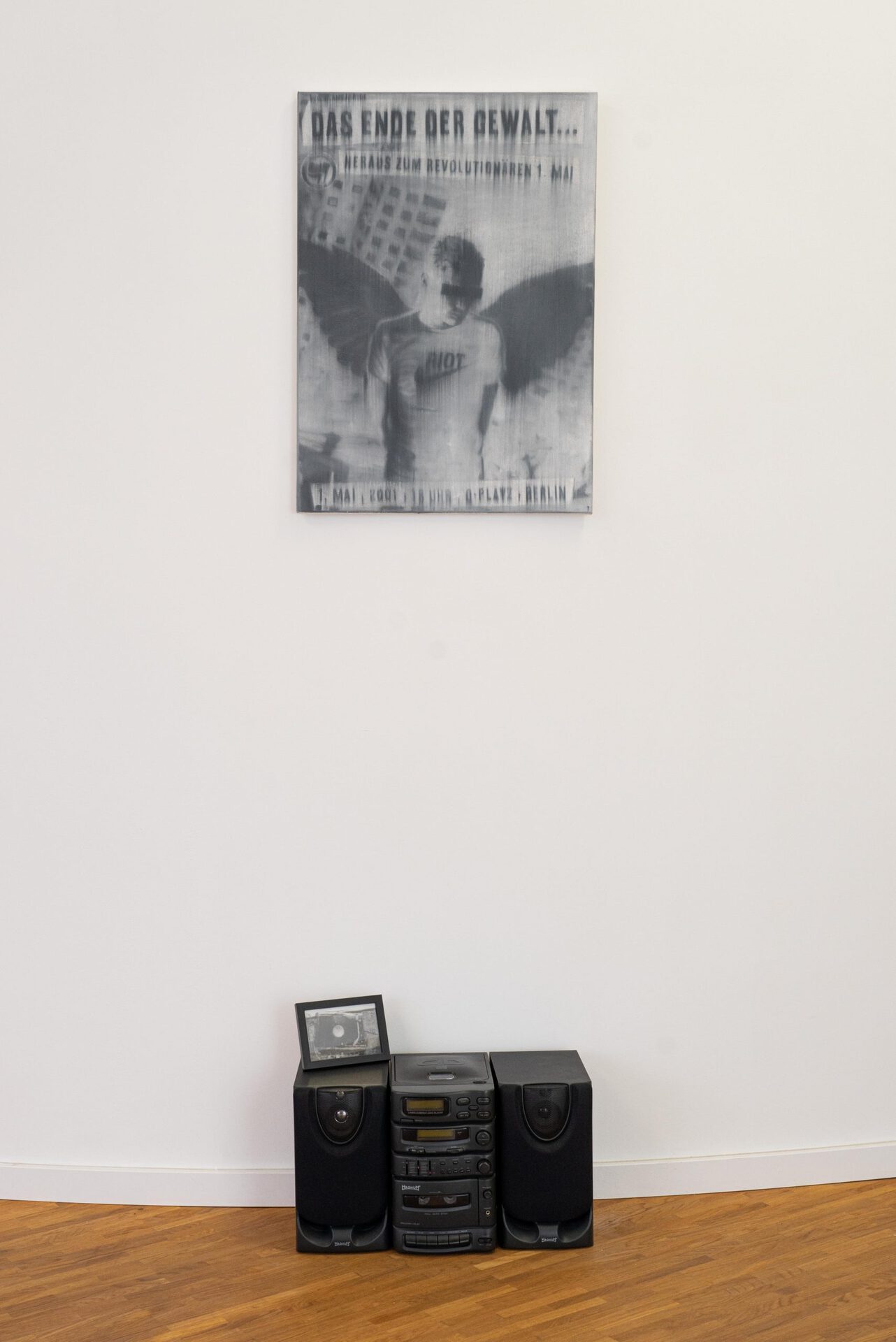
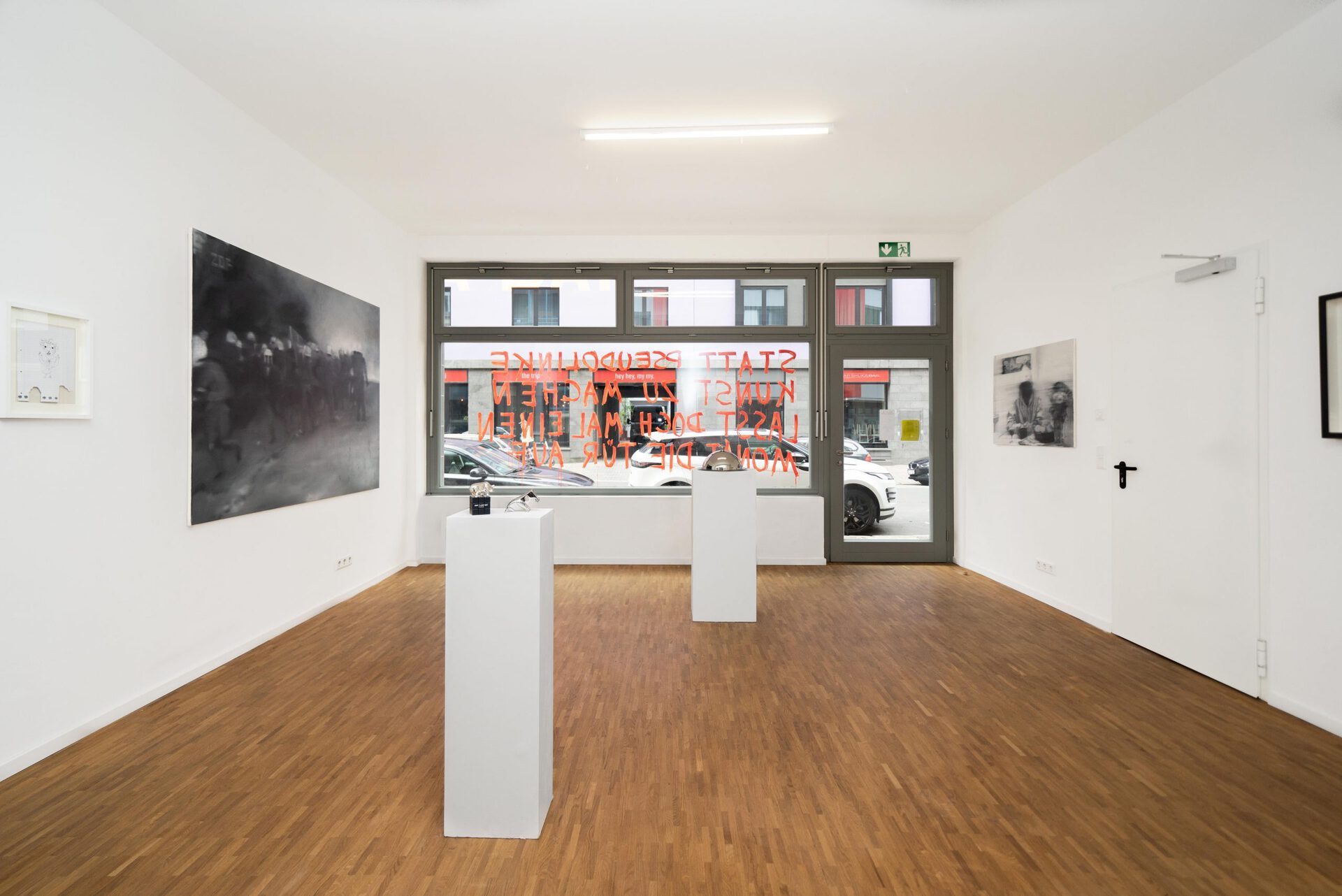
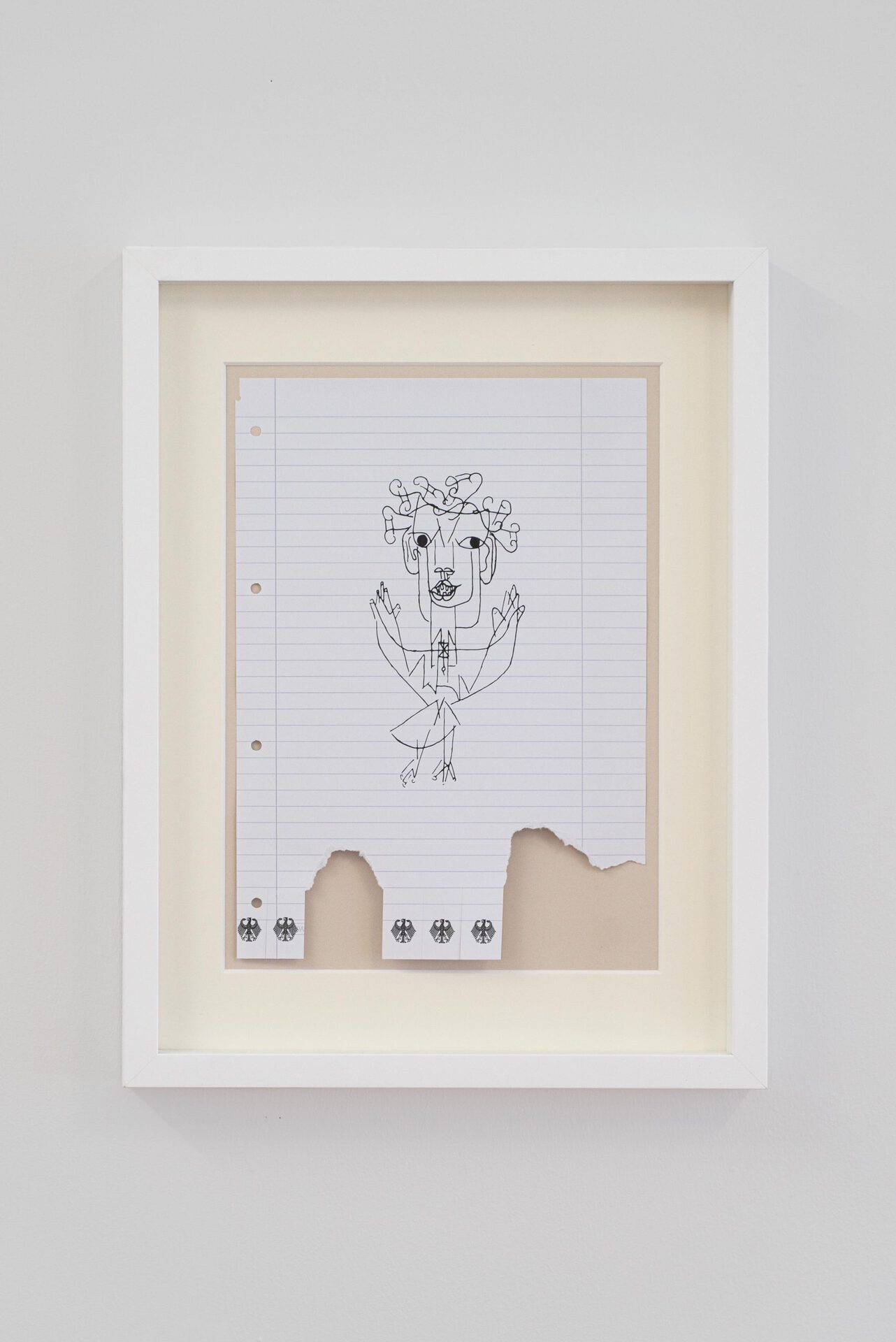
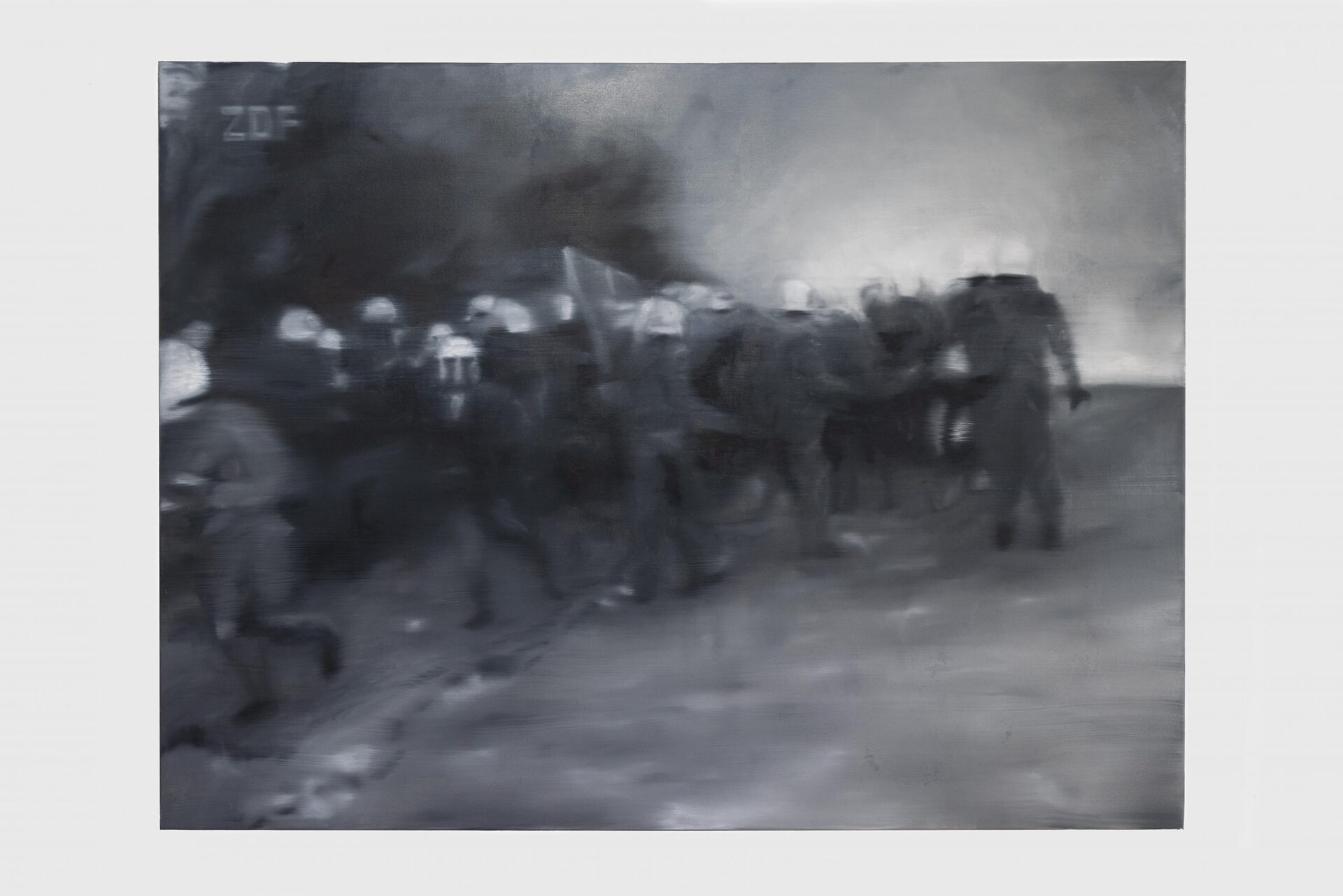
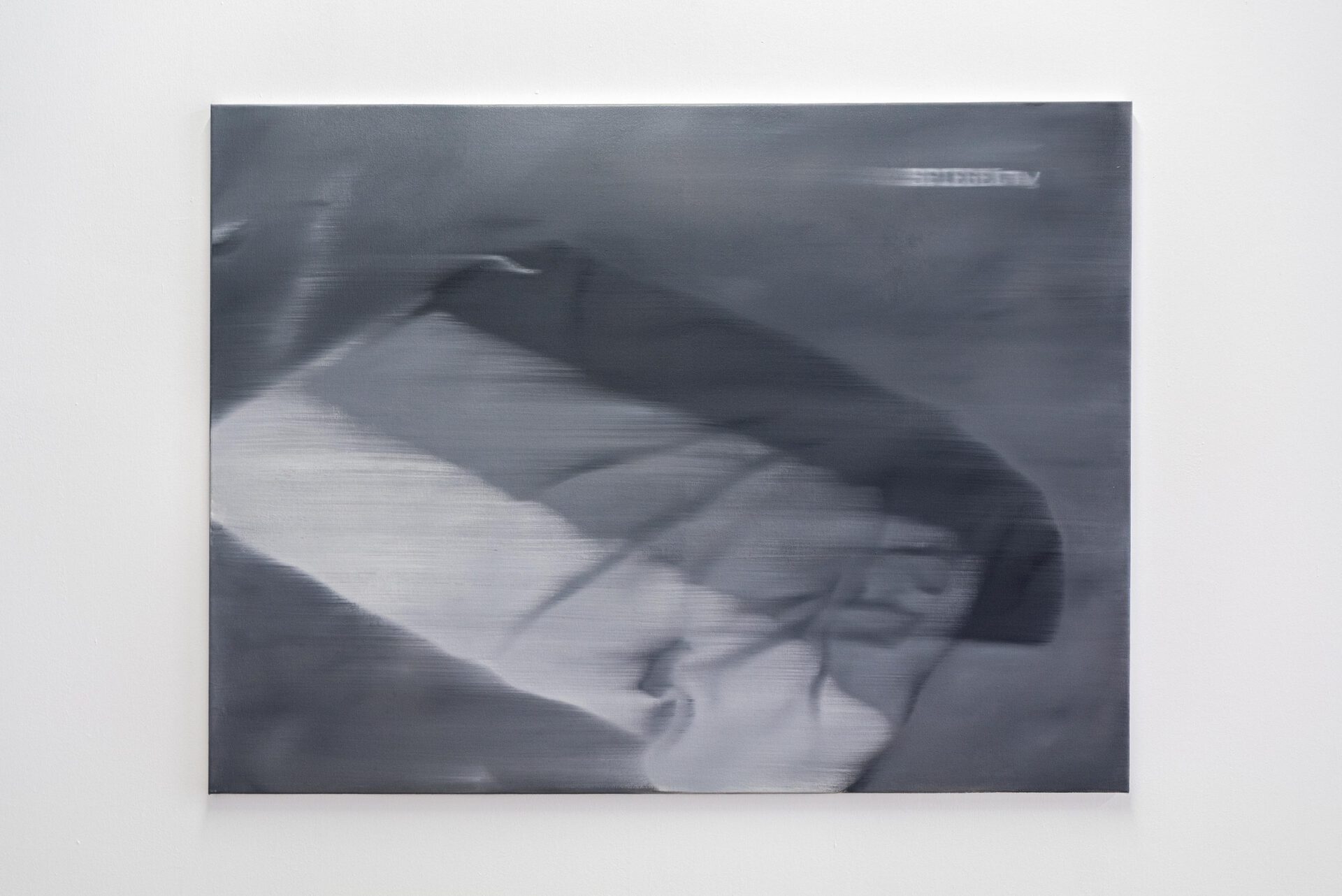

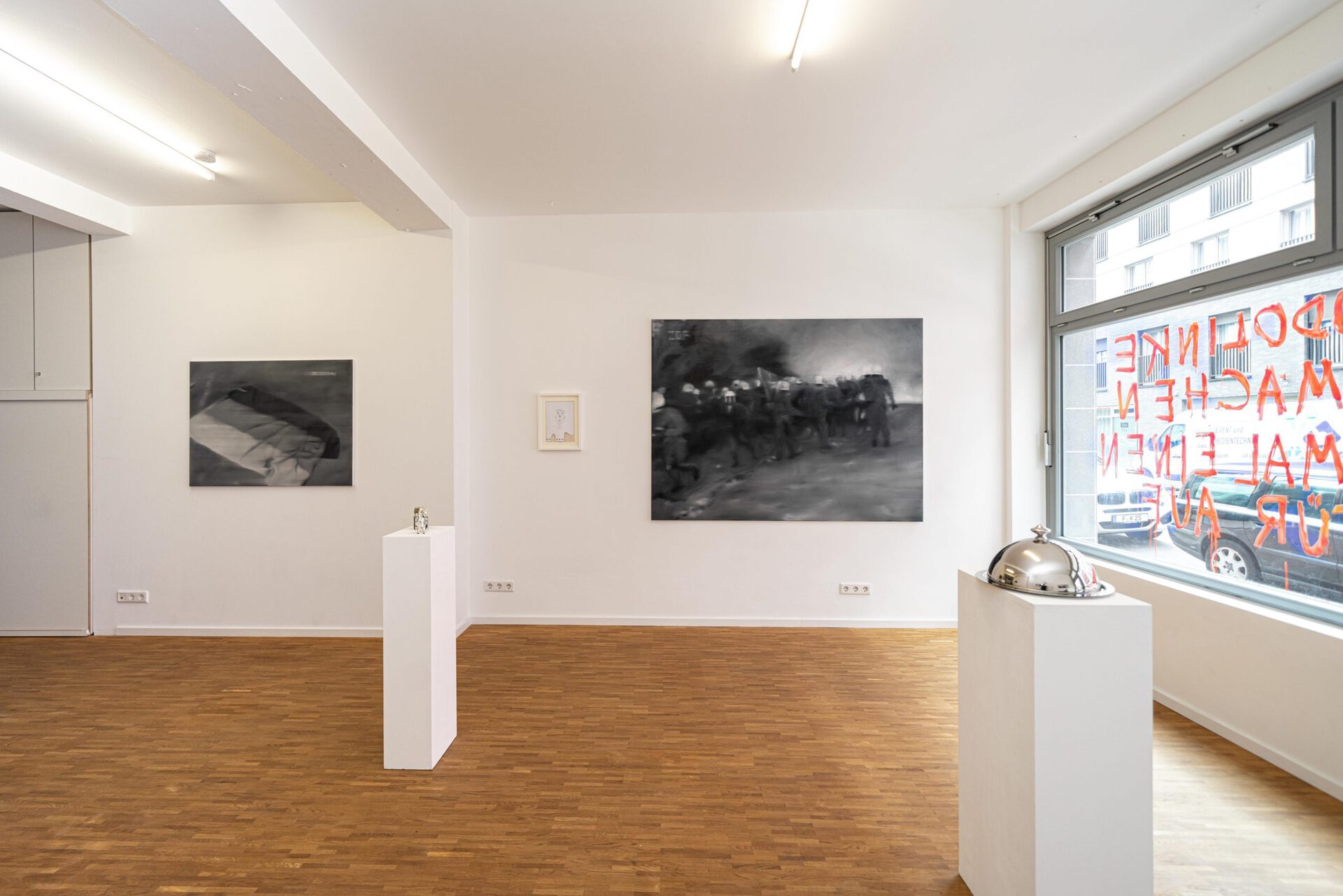
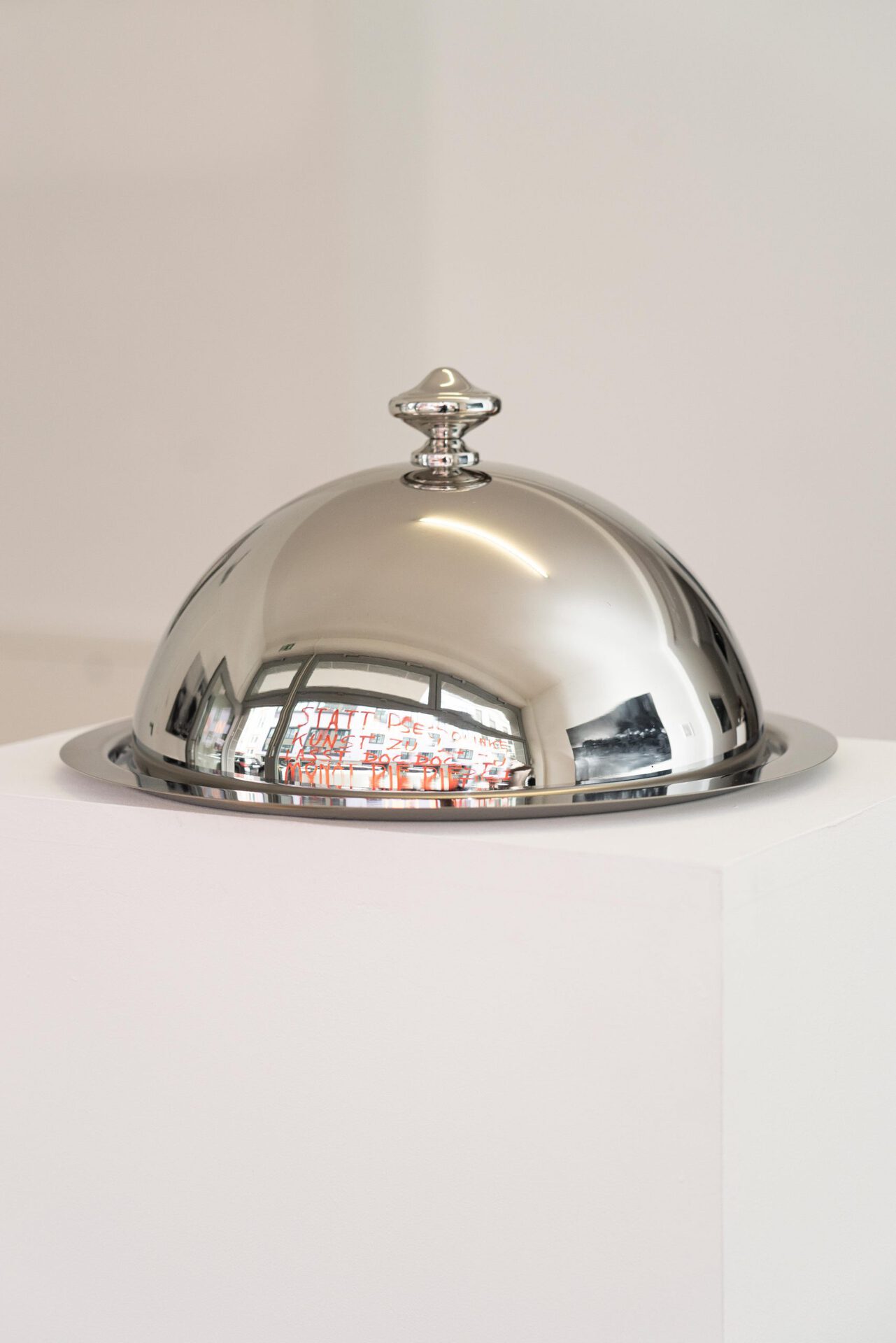

Location
Synnika, Frankfurt am MainDate
17.06 –13.08.2021Curator
Synnika, responsible: Naomi RadoPhotography
Jakob OtterSubheadline
44 years after the »44 days of the German Autumn«, Nicholas Warburg paints images of his antifascist youth in style of Gerhard Richter's RAF series.Text
In blurred black-and-white paintings Richter displayed the corpses of Stammheim, the arrest of Holger Meins, a portrait of the young Ulrike Meinhof, and Andreas Baader's record player, in which his suicide weapon had supposedly been hidden. In 1989 Richter gave his artworks to the collection of the MMK Frankfurt for ten years – probably in part because the initial RAF attack, the arson of a department store, took place here.
While Richter used photographs from Stern magazine as footage for his paintings, Warburg's work is based on film-stills from »scene«-documentaries and graphic images from political posters. Thus, the autobiographical exhibition unfolds with an ironic-sentimental flair. Whereas Richter chose a polarizing historical subject to generate meaning which ultimately, through his postmodern approach, leads to nothing, Warburg's mimicking of Richter frivolously undermines the awe-inspiring series of works by the most famous living German painter, with almost random seeming images of his own political socialization.
Standing out somewhat is the nude of Rainer Werner Fassbinder, a screenshot from the omnibus film »Germany in Autumn«. In a 30-minute episode, Fassbinder films himself reacting to the Stammheim events: agitated, outraged, aggressive, paranoid. In Warburg's oil painting, he appears similarly iconic as the RAF members do in Richter's work. Indeed, Fassbinder was an important part of Warburg's éducation sentimentale.
Further references can be found in other works to Walter Benjamin and Franz Kafka. It is remarkable that the theme of RAF and RWF coexists with that of Benjamin / Kafka in the exhibition: whereas the former coupling made themselves guilty of anti-Semitism to different extents, Kafka and Benjamin themselves were of Jewish descent. Even in the 2000s, the German youth's left politicization and poetization were not free from these invariants of German history. A painting copying the graphics of a 1st of May demonstration poster is titled Berliner Kindheit um 2000.
Another Benjamin reference presents itself as a print-edition showing Paul Klee's Angelus Novus on lined paper, titled Engel der Geschichte im Zeitalter seiner technischen Reproduzierbarkeit. At the bottom of the prints are small Bundesadler (federal eagles), that can be torn off, just like telephone numbers on notice boards. Benjamin's angel of history represents the perception of the course of time from a human perspective. We cannot see into the future, but into the past, where more and more catastrophes are piling up. On the way to the final fiasco, we as viewers of Warburg's work mentally tear down eagle after eagle. Or to use an allegory of Germany by Benjamin's friend Bertolt Brecht: "The great Carthage fought three wars. It was still powerful after the first, still inhabitable after the second. It was no longer to be found after the third."
While the exhibition IN YOUTH IS PLEASURE is in black and white, grey and silver tones, there is a bright red graffiti lettering on Synnika's front window, facing the street: "STATT PSEUDOLINKE KUNST ZU MACHEN LASST DOCH MAL EINEN MONAT DIE TÜR AUF. (INSTEAD OF MAKING PSEUDO-LEFT ART, WHY NOT LEAVE THE DOOR OPEN FOR A MONTH.)" In the typography of his Titelbilder-series, Warburg delivers here both a criticism of his exhibition as well as the political claim of the exhibition's location, which is in the middle of a contested social hotspot – the Frankfurt railway district. In all this the artist stages the radical gesture of his antifascist socialization as a nostalgic meta-quote breaking through from within.